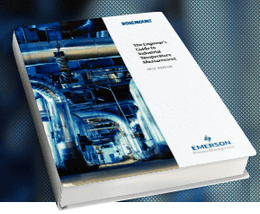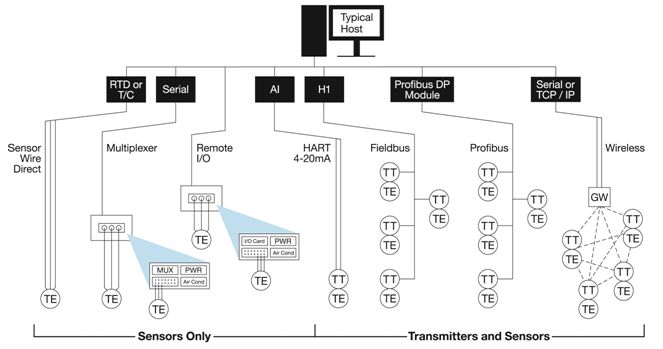 During the recent Emerson Exchange conference, the live blog posts were flowing fast and furiously here on the blog. One of the posts highlighted Emerson’s Michelle Weimert‘s session, Combine your knowledge on Temperature Measurement with the experts and the new Rosemount Temperature Handbook.
During the recent Emerson Exchange conference, the live blog posts were flowing fast and furiously here on the blog. One of the posts highlighted Emerson’s Michelle Weimert‘s session, Combine your knowledge on Temperature Measurement with the experts and the new Rosemount Temperature Handbook.
I saw an email with a draft article by Michelle about intelligent diagnostics in temperature measurement. She opens noting the critical nature of temperature measurement in most processes. If a temperature measurement is not accurate, repeatable, and reliable for any reason, it can have a detrimental effect on the process efficiency, energy consumption, product quality and safety.
Michelle notes that the most commonly used ways for installing temperature measurement devices are wire direct, multiplexers, and transmitters that can be enhanced with advanced diagnostics.
The wire direct method is where a field temperature sensor is wired directly to an input card rack within the control room system. The signal is conditioned or converted into an analog reading of the temperature measurement. Wire is expensive, especially for thermocouples, and the cost can outweigh its benefit. The wires must be shielded, grounded and routed correctly, which makes it harder to install correctly. Michelle counsels that care must be taken to separate and isolate the low-level signal wiring from any higher voltage wiring to reduce EMI and RFI noise interference.
Multiplexers incorporate field mounted I/O subsystem mounted into I/O cabinets that are connected to the control system via a digital link. They often use a proprietary protocol provided by the control system manufacturer or one of the other standard protocols such as Modbus, OPC, or Profibus.
The use of transmitters has replaced wire direct and multiplexers in many applications and industries. Transmitters are instruments that receive low-level inputs from temperature sensors, such as RTDs or thermocouples. They filter, condition and convert the signal to communicate a robust analog signal of the temperature measurement to the control room. Also, transmitter accuracy and performance is typically twice as good as direct-wired temperature inputs.
Multiple input transmitters design connects multiple sensors from separate temperature measurement points within the process to a single transmitter. The design works best for applications with multiple sensors in a highly concentrated area.
Wireless transmitters are the newest approach to temperature measurement. Signals flow over an open wireless network from a single sensor/single input point with a transmitter to a wireless gateway. If the process requires several temperature measurement points, multi-input wireless transmitters enable sending over a wireless network data from several temperature sensors to an individual gateway that relays the data to the control room.
These wireless measurements can eliminate “blind spots” where it was previously too difficult or expensive to install wired instruments. With wireless sensing remote locations, physical obstructions, and integrating technologies are no longer barriers.
All smart transmitters have diagnostics, with some more extensive than others. For example, the HART, Foundation fieldbus, or Profibus protocol in Rosemount transmitters has interior diagnostics that monitor the transmitter’s functionality and output validity. There are also external diagnostics that monitor the measurement signal for drift, degradation, measurement validity, and broken or damaged leads.
 Measurement validation in advanced diagnostics provides process insight which enables the plant to detect false readings and implement a control strategy based solely on valid data allowing for tighter process control. Degraded measurement conditions can also be identified so thermocouples and RTDs can be proactively replaced before failure. Measurement validation also detects abnormally fast process temperature change so user can be alerted before process becomes unsafe.
Measurement validation in advanced diagnostics provides process insight which enables the plant to detect false readings and implement a control strategy based solely on valid data allowing for tighter process control. Degraded measurement conditions can also be identified so thermocouples and RTDs can be proactively replaced before failure. Measurement validation also detects abnormally fast process temperature change so user can be alerted before process becomes unsafe.
If you haven’t already received your complimentary copy of the Engineer’s Guide to Industrial Temperature Measurement, where you can learn more about these advanced diagnostics, order it now.





